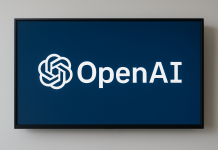In a strategic push for AI self-reliance, India has begun developing its first homegrown large language models (LLMs), aiming to rival global players like ChatGPT and Anthropic. Spearheaded by four startups—Sarvam, Soket AI, Gnani.ai, and Gan.ai—this initiative has government backing under the IndiaAI Mission, with Union IT Minister Ashwini Vaishnaw targeting an initial rollout within months.
The focus on multilingual capability, cultural nuance, and voice interfaces reflects India’s need for AI systems attuned to its diverse languages and contexts.
India’s reliance on international LLMs often falls short in understanding local idioms, accents, and sector-specific demands. To bridge this gap, the government invited bids for over 18,000 GPUs—far exceeding initial estimates—to power high-parameter models tailored for Indian use cases.
This compute surge underlines a national strategy to democratize AI infrastructure and foster domestic talent rather than depend solely on foreign technologies.
Sarvam in Bengaluru leads the charge with three versions of its model: Sarvam-Large for deep reasoning and text generation, Sarvam-Small for real-time AI applications, and Sarvam-Edge for on-device, low-latency tools.
Founders Vivek Raghavan and Pratyush Kumar aim to address a spectrum of use cases, from conversational agents to embedded systems, emphasizing efficient models optimized for Indian languages and contexts.
With government-provided GPUs and a six-month commitment announced by Ashwini Vaishnaw, Sarvam’s models are expected to be globally competitive while serving vernacular needs.
Soket AI plans to develop an open-source foundation model for India’s linguistic diversity, targeting sectors like defence, education, and healthcare. Founder Abhishek Upperwal envisions iterative development, starting small, testing rigorously, and expanding to foster community contributions and transparency.
Gnani.ai is developing real-time, voice-first LLMs with emotional intelligence, starting with a 14-billion-parameter model and expanding to 70 billion parameters within a year, aiming to improve customer service, smart assistants, and accessibility tools in India.
Stanford alumni Suvrat Bhooshan and Parth Sarthi are leading India’s push in voice AI, Gan.ai, with a 70-billion-parameter multilingual foundation model. The startup aims to outperform global benchmarks and leverage domestic talent and infrastructure to create globally competitive solutions.
IndiaAI Mission aims to create AI tools that cater to India’s diverse needs, languages, and sectors. The initiative involves startups and government investment in compute capacity, talent development, and safety standards. The next six to twelve months will determine the performance of indigenous Language Learning Machines (LLMs) in shaping India’s AI trajectory.
As these models mature, businesses and developers can expect more accurate language understanding, localized applications, and voice-driven interfaces tailored for the Indian user. If successful, India’s homegrown LLMs could not only reduce dependence on foreign solutions but also export culturally aware AI globally.











